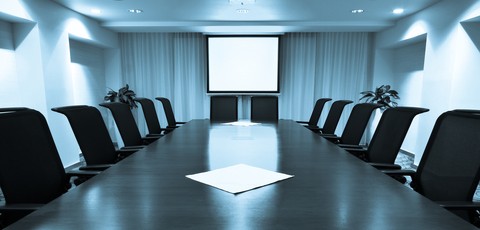One of the most common issues that I come across, and hear people complain about, while consulting to many great companies around the world, is how frustrated they are by their ‘meeting cultures’.

I find this incredible, that in today’s world it is commonplace for organisations of all kinds to be stuck in meeting forms that are seemingly so unproductive – whether they are simply out of date in their form and/or poorly executed. I hate to think how much time, energy and money is being wasted.
For example, I have seen companies that are stuck in meeting cultures based on having one-hour meeting after one-hour meeting, never getting to the real issue, or facing into the underlying tensions and dilemmas, but happy to put another meeting in the diary, convinced that this is what it means to be productive. These meetings are often then judged on whether or not there are clear next actions (rather than new insight or new understanding) increasing the likelihood of confusing busyness with productivity.
I have also experienced meeting cultures that completely shy away from any real-time issue, because the norm is to socialise all issues through consensus (and a scarily large and inefficient engine room of bilateral conversations) prior to the meeting. Unbelievably, I have seen this lead to the minutes of the meeting being distributed before the meeting takes place.
I have also seen senior ‘value chain’ teams put together in the hope that everyone potentially impacted by a decision was in the room, thereby increasing the likelihood that tough decisions would be made. Yet these teams chose instead to set up a series of committees as a way of avoiding making the decisions themselves.
Without naming names, this happens at some of the biggest companies in the world. So what’s going on here? And what other options are available?
Let me describe two polarities. Many leaders are fanatical about having ordered meetings. They start with precise and certain agendas but often end with varying degrees of uncertainty around key decisions, if any decisions are made at all, or with decisions that are made prematurely and with weak alignment.
At the other (more unfamiliar and counter-intuitive) end of the spectrum are meetings that start with uncertainty, embrace and explore both the known and the unknown, and that end when new order and new clarity emerges. Decisions are then rooted in common understanding established by valuing and assimilating differences, exploring tensions and having made new meaning together – and not the ping pong of opinion.
The first meeting form is often characterised by sitting around a table, laptops out, with a long agenda of presentations and inputs. The second is dependent not just on good content but on great human process i.e. how to create containers and hold spaces for creativity and insight-based action to emerge.
To help unlock this opportunity space, we have codified a number of different meeting forms. Each has a different rhythm. Each requires a different type of preparation. And, each uses time and space differently. Here are a few examples.
Operational meetings
An operational meeting is focused on efficiently sharing information, giving and receiving feedback and making critical decisions. It is based on short pre-reads, succinct inputs and clear understanding about how to listen, explore and respond to what is brought into the room. This includes learning how to hold short discussions, how to allow everyone’s voice to be heard, and the establishment of clear decision-making protocols.
Strategic meetings
A strategic meeting is focused on exploring more complex choices and pathways. This type of meeting has in-depth pre-reads (designed to saturate the mind), a choreography of short strategic inputs (moving the focus from facts to patterns), and opens a space to slow down and make new meaning together. This type of meeting relies on establishing deeper relational contact between its members, enabling them to work spatially with emergence i.e. find the most elegant way forward through time and space.
Creative meetings
Great strategy is not only about great answers but also about great questions. The former can be acted upon and managed through ongoing operational meetings, while the latter requires another type of meeting form – the creative meeting.
Creative meetings gather the right people around complex challenges and critical questions. They rely again on slowing their members down, quickly sharing what they already know (their experience, wisdom, preconceptions and dogmas) and then challenging them to step into the unknown, lean into the emerging future, find and follow flow and catalyse new patterns of thought and action. This meeting form is by design an iterative dance between the known and the unknown – what we call riding the creative-rollercoaster.
Now, these are just three examples of a growing ecology of meeting forms. Knowing that there are alternatives is the first step. Learning how to design, hold and catalyse them is the next.
With a wider set of options now available, and with the majority of organisational time being meeting based, surely this is the place to look to significantly improve productivity, drive better decision-making, accelerate innovation, develop more elegant strategies, and save massive amounts of time and energy.
Further Information
Dr Nick Udall is co-founder and CEO of nowhere, a founding member and the current Chair of the World Economic Forum’s Global Agenda Council on New Models of Leadership, and the author of Riding the Creative Rollercoaster (published by Kogan Page).


Follow Company Bug